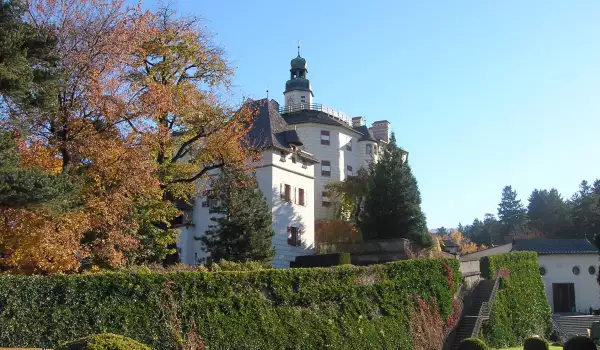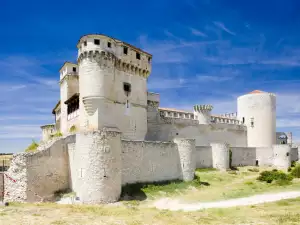Ambras Castle

The incredible building of the Castle Ambras is inextricably linked with the history of the Austrian town of Innsbruck, which is located in the heart of the Alps. In this small town architecture is reminiscent of the exciting past, which today is intertwined with modern facades of buildings. Innsbruck is the capital of the province of Tyrol, which is known for its beauty. Johann Wolfgang von Goethe often likes to say that Europe is the heart of the world, the Alps, the heart of Europe and Tyrol, the heart of the Alps.
Innsbruck passes around the Inn, which is the largest tributary of the Danube river.
Innsbruck definitely can be defined as a historical symbol and a cradle of culture and civilization. Today Ambras castle remaines as testimony to the glorious past of the town. It was the residence of the Habsburgs and invariably associated first with the Austrian Empire, and then with Austria-Hungary.
This amazing attraction in Innsbruck is located in the hills above the city. From 1563 to 1595 Ambras was the residence of Ferdinand II. Its place and fort was raised early 10th century, but about 100 years later it was destroyed. Parts of its foundations, however, are used to construct a modern building of the palace.
After the death of Ferdinand II the splendid castle was inherited by his second son, Charles II, who is not tied to sentimental feelings towards the residence of his father and sold it to Emperor Rudolf II.
Today the beautiful white castle Ambras exposes the oldest collection of paintings and weapons across Europe. Credit for this unique collection of art objects is of Ferdinand II, who when still alive constructed in the lower part of the modern palace a museum. Today it still works. Exposures are set in two rooms, one can see exhibits of valuable weapons and armor.

On the second floor it exposes to a unique collection of works of art of over 200 portraits. The upper part of the castle shows the bathroom of the wife of Ferdinand. Between the lower and upper Ambras is located the so called Spanish Hall, which impresses with its unique frescoes painted on the walls. This facility is an example of German Renaissance architecture.
Other intersting places in the city center are the church Hofkirche or as it is also called, the royal church. Also known as the Franciscan church, which was built in 1563 by order of Emperor Maximilian I, who was to be buried there after his death. However, he was buried in Vienna, but 28 figures cast from iron for this purpose remain in the church.















